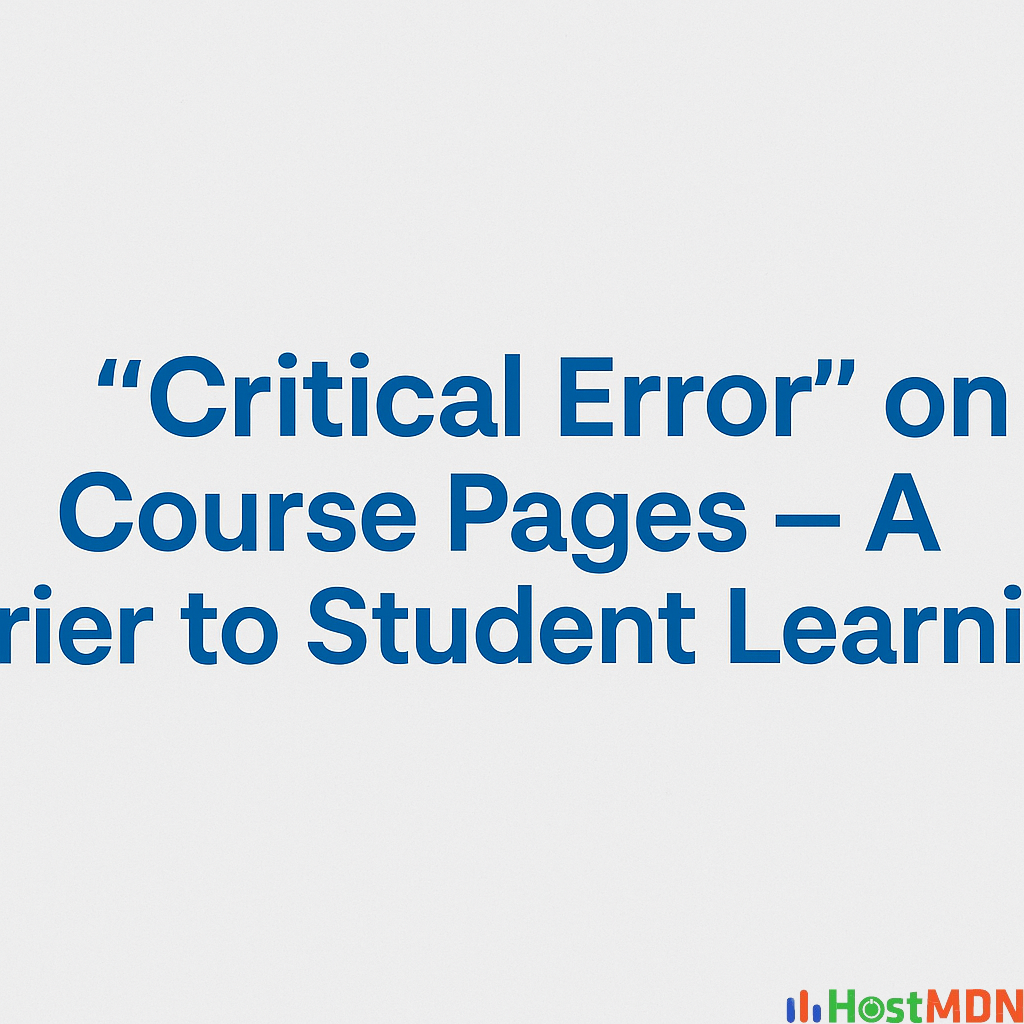In today’s world,online course not loading WordPress has become a crucial part of learning for students across the globe. Whether it’s academic courses, skill-based training, or professional development programs, e-learning platforms are shaping the future of education. However, when students encounter a “There has been a critical error on this website” message—especially on course pages—it becomes more than just a technical issue. It creates a real barrier to learning.
🛠️ What Is the Critical Error?
This type of error typically occurs on WordPress-based websites and is often linked to a plugin, theme conflict, or server-related issue. The screen shows a plain layout with some CSS code and finally this message:
This means something broke in the backend—usually a PHP issue—preventing the page from loading. If the error appears only on course pages, the problem is likely related to your Learning Management System (LMS) plugin or how the course content is rendered.

🎓 How This Affects Students,online course not loading WordPress
While a critical error may seem like a temporary technical hiccup to some, its impact on students is significant:
- Interrupted Learning Flow
Students may be in the middle of a lesson or preparing for an exam. A sudden error on the course page breaks their concentration and routine. - Loss of Motivation
If the site repeatedly goes down or remains inaccessible for hours, students may lose trust and feel disheartened. - Reduced Credibility
Online learners expect reliability. When a platform fails to deliver a smooth experience, it negatively impacts its reputation. - Frustration & Dropouts
If students cannot access their lessons, they may abandon the course or request refunds, leading to revenue loss and user dissatisfaction.
💡 Common Causes of the Error
Let’s look at some possible reasons for this error, especially when it happens only on course pages:
- Plugin Conflict: Incompatible or outdated LMS plugins like LearnDash, Tutor LMS, or LifterLMS.
- Theme Incompatibility: The active theme may not fully support your course plugin.
- PHP Errors: Improper coding, missing functions, or syntax errors in custom scripts.
- Server Limitations: Low memory limits or outdated PHP versions on your hosting.
- Cache or Database Corruption: Issues with database queries or cached content.
✅ Step-by-Step Troubleshooting Guide
To fix the issue, follow these proven steps:
1. Enable WordPress Debug Mode
Edit your wp-config.php file and add or change the line:
phpCopyEditdefine('WP_DEBUG', true);
This will show the exact file and line number causing the issue.
2. Temporarily Disable Plugins
Go to your hosting panel or use FTP to rename the /plugins/ folder. Then enable plugins one by one to identify the culprit.
3. Switch to a Default Theme
Try switching to a default WordPress theme like Twenty Twenty-One to check if the issue is theme-related.
4. Update PHP and Plugins
Ensure you are using PHP 8.0 or higher. Outdated PHP versions often clash with modern plugins.
5. Check Error Logs
From your hosting cPanel, view the “Error Logs” section to trace the specific error.
6. Increase PHP Memory Limit
Add this to your wp-config.php:
phpCopyEditdefine( 'WP_MEMORY_LIMIT', '256M' );
7. Restore from Backup
If nothing works and your site recently worked fine, restore a working version from your latest backup.
🔧 Preventing Future Errors
To make sure such issues don’t return:
- ✅ Use trusted LMS plugins and update them regularly
- ✅ Always back up your website before major updates
- ✅ Use a reliable, WordPress-optimized hosting service
- ✅ Avoid using too many plugins from unknown sources
- ✅ Monitor performance using tools like WP Health or Query Monitor
📢 Communicating with Students
When an error disrupts their learning, students deserve transparency. You can post a notice or send a message like:
“Dear students,
We’re currently experiencing a technical issue affecting the course pages. Our development team is actively working to resolve the issue as quickly as possible. We sincerely apologize for the inconvenience and appreciate your patience and support.”
This type of communication builds trust and shows professionalism.
🔚 Final Thoughts
A critical error on your course page might seem like a frustrating technical problem, but it carries deeper implications. It affects the learning experience, disrupts engagement, and harms your brand’s credibility. Fortunately, with the right tools and approach, the issue is fixable—often within minutes.
As an educator, course creator, or platform owner, your responsibility is not only to provide quality content but also to ensure uninterrupted access. Technology should empower learning, not hinder it. Stay proactive, keep backups, monitor your system regularly, and always put the learner’s experience first.

Comments